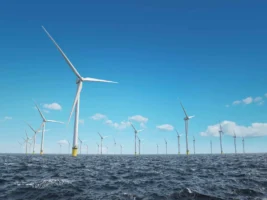New Zealand energy utility Vector is making a major push into the Australian battery storage market, targeting off-grid and edge of grid markets, as well as small and big business customers.
Vector on Thursday unveiled the biggest utility-scale battery storage installation in Australasia, using the Tesla Powerpack, the large-scale version of the Tesla Powerwall.

The 1MW/2.3MWh installation at the Glen Innes sub-station, near Auckland – enough to power 450 homes for 2.3 hours, is being used as cheaper alternative to grid upgrades, as well as adding to system security. Such systems can also time shift solar, shave peak demand, and increase network capacity for regular loads.
Vector now intends to take such installations to the Australian market, and CEO Simon McKenzie says there is a big opportunity there because the mechanics and benefits of battery storage systems are not well understood.
“From my perspective, it seems that people don’t recognize the fact that mattery storage has multiple users,” McKenzie told RenewEconomy in a phone interview from Auckland.
“We now need a completely different way of looking at things. Rather than a N-1 deterministic planning, we are now looking at how we can expand capacity and services at a lower cost than traditional network investment.”
This “change in paradigm” as McKenzie describes it, is inevitable even if many traditional utilities are slow on the uptake. And that is why he sees the opportunity for a NZ utility – to use its network “DNA” – to move into the Australian market.
The main market segments he sees are in the commercial and industrial sectors, where businesses – particularly in Queensland – are facing hefty demand charges. Vector estimates the pay-back on battery storage from being able to shift from one tariff setting to another is quite rapid.
Vector also sees opportunities in the off-grid market, where the focus is on diesel substitution, and offers quick payback, and to edge of grid situations, where the savings are made in reduced diesel and cheaper grid augmentation.
Ashley Rogers, Vector’s national business development manager for commercial storage in Australia, says the pay-back on demand tariff customers in Queensland could be as little as 4 to 5 years. And quick payback also exist for diesel displacement.
The Powerpack is basically a system that includes 16 of the smaller Powerwalls (the interiors not the fancy covers), and can be scaled up from its starting point of around 200kWh. A 20MW/80MWh facility in California will effectively replace a peaking gas generator.
McKenzie expects the costs of lithium-ion batteries will come down substantially over the next 4 to 5 years, making it even more compelling solution for grid alternatives, time shifting solar, meeting peak demand, providing grid stability, or saving on new poles and wires and transformers.
“It’s still early stages in the batter storage market, but the Australian market has got widespread solar penetration, a lot of network opportunities and we think we can give it a really good push.
“We still see a reasonable degree of skepticism (about battery storage amongst traditional utilities). Many people wish that world will stay the same, but technology is changing and customers want more choice and solutions.”
McKenzie has been watching with interest the debate around renewables and storage following the blackout in South Australia. “Some times out of crisis we can see people accelerating solutions,” he says. “You don’t want to invest millions of dollars on a network solution that in a few years will be difficult to justify.”
 As for the Glen Innes installation, McKenzie says the Tesla Powerpack introduces an agility and flexibility into how Vector manages and invests in its network.
As for the Glen Innes installation, McKenzie says the Tesla Powerpack introduces an agility and flexibility into how Vector manages and invests in its network.
“By gauging trends such as household energy consumption, the effect of infill housing and the uptake of new energy systems, we can target growth areas and defer or avoid the significant investment required in a new substation,” he said in a statement.
“And when connection or consumption growth requires a conventional network upgrade, we can mobilise the batteries to other parts of the network where power demand is rising. This is transforming the way the energy sector is managed and will have a powerful influence on consumer behaviour.”










